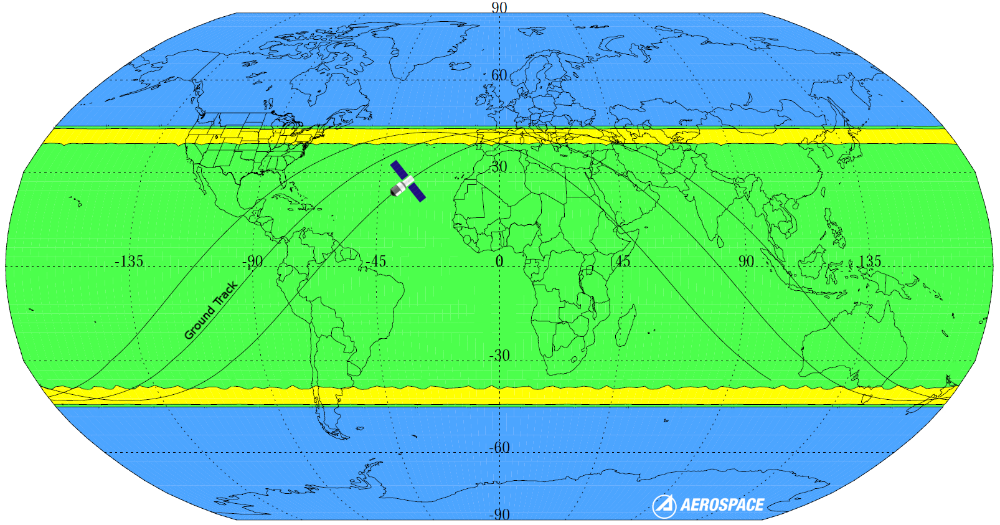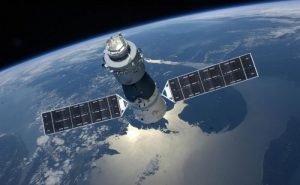
An 8.5 ton Chinese Space Station is flying out of control and is now forecast to crash somewhere on Earth within the coming days. Experts won’t know exactly where Tiangong-1 will crash until a few hours before impact, but experts believe the best odds exist near 42 degrees north and south of the Equator. The European Space Agency (ESA)’s Space Debris Office at ESOC in Darmstadt, Germany believes that the crash will occur between Friday, March 30 and Monday, April 2. California-based Aerospace Corportation’s forecast is a little bit broader, suggesting a crash between Thursday, March 29, and Wednesday, April 4.
While the odds of being struck by the crashing space station are extremely remote, there are real risks associated with the crash. Radio-active substances and hydrazine on-board the spacecraft could survive re-entry Aerospace Corporation warns. “For your safety, do not touch any debris you may find on the ground nor inhale vapors it may emit.” Hydrazine is a highly corrosive and toxic chemical compound used as a thruster propellant in spacecraft. According to the Environmental Protection Agency, short-term exposure to hydrazine leads to seizures, coma, pulmonary edema as well as itchy airways, eyes and nose. Long-term exposures have been linked to the development of cancer in humans.

Last May, China informed the United Nations of the problem station. In a letter, Chinese officials wrote, “On 16 March 2016, the Tiangong -1 Target Manned Space Vehicle ceased functioning. It had fully fulfilled its historic mission. To date, Tiangong-1 has maintained its structural integrity. Its operational orbit is under constant and close surveillance by China. Its current average altitude is 349 kilometres and it is decaying at a daily rate of approximately 160 metres. Its re-entry is expected between October 2017 and April 2018. According to the calculations and analysis that have been carried out, most of the structural components of Tiangong-1 will be destroyed through burning during the course of its re-entry. The probability of endangering and causing damage to aviation and ground activities is very low.”
Harvard University astrophysicist Jonathan McDowell spoke to British newspaper “The Guardian” about the risk of the space station crash. “You really can’t steer these things,” he said. “Even a couple of days before it re-enters we probably won’t know better than six or seven hours, plus or minus, when it’s going to come down. Not knowing when it’s going to come down translates as not knowing where its going to come down.” McDowell said a slight change in atmospheric conditions could nudge the landing site “from one continent to the next”. While most of the eight tons of space station would burn up as it passes through the atmosphere, McDowell said some parts, such as the rocket engines, were so dense that they wouldn’t burn up completely. “There will be lumps of about 100kg (220 pounds) or so, still enough to give you a nasty wallop if it hit you,” he said. “Yes there’s a chance it will do damage, it might take out someone’s car, there will be a rain of a few pieces of metal, it might go through someone’s roof, like if a flap fell off a plane, but it is not widespread damage.”
In their written statement to the United Nations, China said they “will issue the relevant information and early warning in a timely manner and bring it to the attention of the United Nations Office for Outer Space Affairs and the Secretary-General of the United Nations by means of note or verbal through diplomatic channels.”